A woman who was nearly swallowed whole by quicksand before being rescued by her husband sparked discussions on Hollywood’s dramatic and exaggerated portrayal of the scary entrapment. The incident reminded quite a few people of the unique natural phenomenon, which used to be featured in popular TV shows and films.
Taking to her Facebook page on June 3, Jamie Acord recalled walking on the water’s edge at George Popham Beach in Phippsburg, Maine, USA, with her husband when she “fell into a sink hole.”
The mom-of-three wrote: “I fell in up to my hips, that’s 2.5 feet (nearly 0.8 meters) Patrick Acord (Jamie’s husband) said one minute I was there and the next I was not.
“I had to have him pull me out I could not do it on my own.
“I could not feel the bottom and I could not get a footing.
“My feet are scratched up as are my knees probably from rocks or sticks in the hole.
“Had I been a small child I would have disappeared into the hole. (I’m not kidding they would have been sucked in).”
Jamie Acord was nearly swallowed whole by quicksand after walking on the water’s edge at George Popham Beach in Phippsburg, Maine, USA
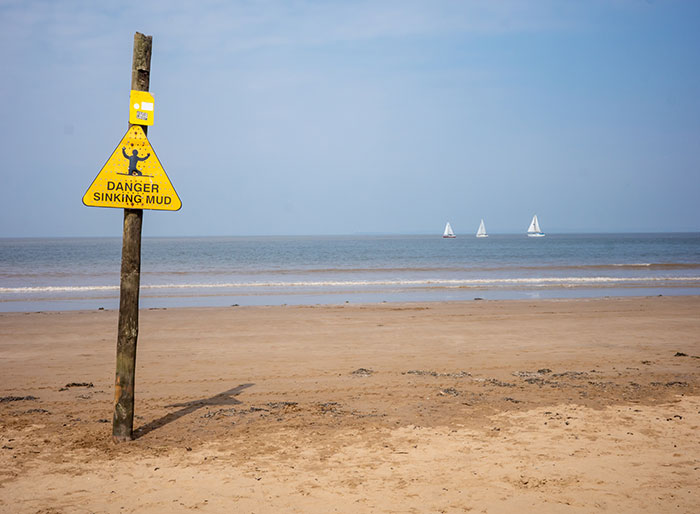
Image credits: Darren Lehane/Getty Images
Jamie went on to recount how her husband managed to pull her out from the hole before it completely disappeared.
People who are caught in supersaturated sand remain buoyant — people don’t sink in quicksand — allowing them to float and wriggle themselves to safety, Jim Britt, spokesperson for the Maine Department of Agriculture, Conservation and Forestry, told the Associated Press (AP) on June 6.
In this case, climate change played a role in the intimidating episode at the state’s busiest state park beach, which draws more than 225,000 visitors each year, Jim explained.
A series of winter storms rerouted a river that pours into the ocean, softening the sand in areas where beachgoers are more likely to walk, necessitating the placement of warning signs by park staff, the conservation expert told the AP.
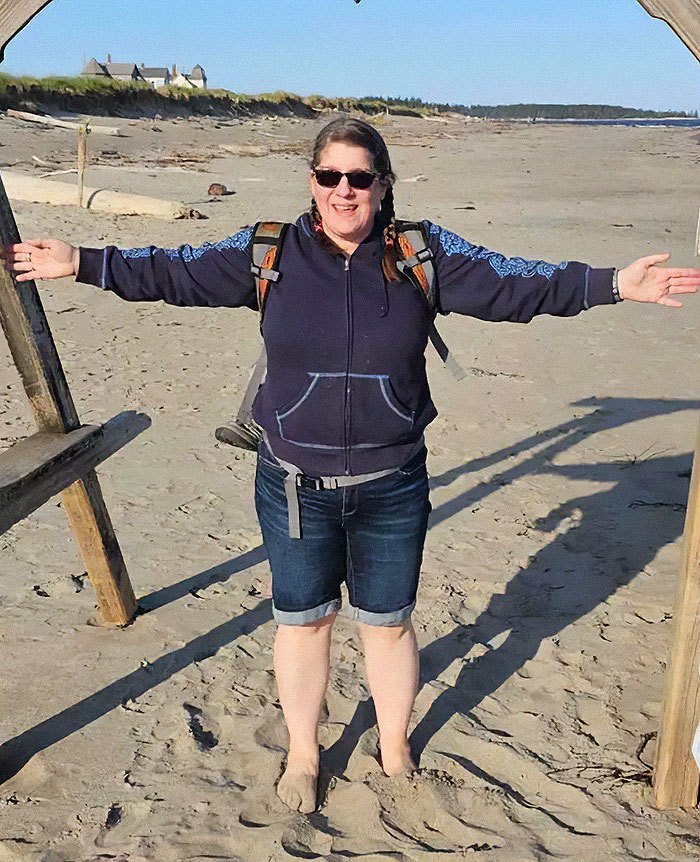
Image credits: Jamie Acord
“It was kind of one of those moments where I didn’t know what to do,” Jamie told People on June 11. “This is a new thing that’s never happened before, and I go to that beach all the time.”
She further revealed to the outlet: “And as soon as he pulled me out, we turned around to look to see what had occurred because we just assumed I’d fallen in an actual hole and there was nothing there.
“It looked just like the beach. It had filled itself right back in.”
Jamie was quickly rescued by her husband, Patrick Acord, who pulled her out
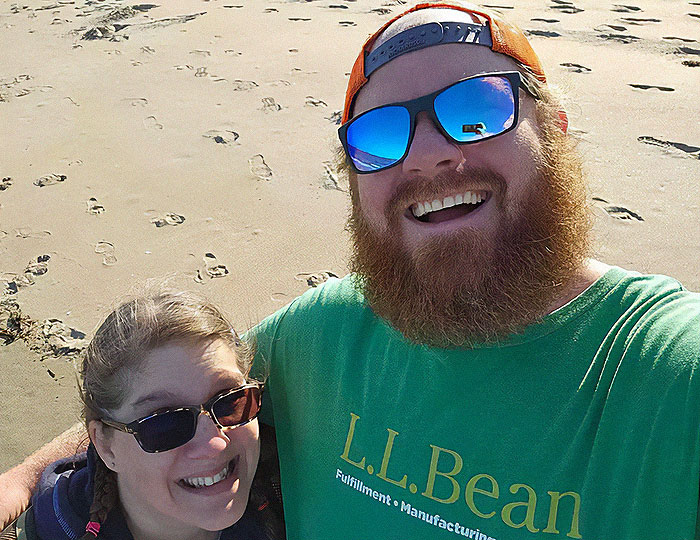
Image credits: Jamie Acord
Quicksand is a mixture of sand and water, or sand and air, that looks solid but becomes unstable when disturbed by any additional stress, as per Darrel G. F. Long, a sedimentologist, for a 2006 Scientific American piece.
In normal sand, grains are packed tightly together to form a rigid mass, with about 25 to 30 percent of the space (voids) between the grains filled with air or water.
According to Darrel, many sand grains are elongated rather than spherical, and loose packing of the grains can produce sand in which voids make up 30 to 70 percent of the mass.
This arrangement is similar to a house of cards in that the space between the cards is significantly greater than the space occupied by the cards.
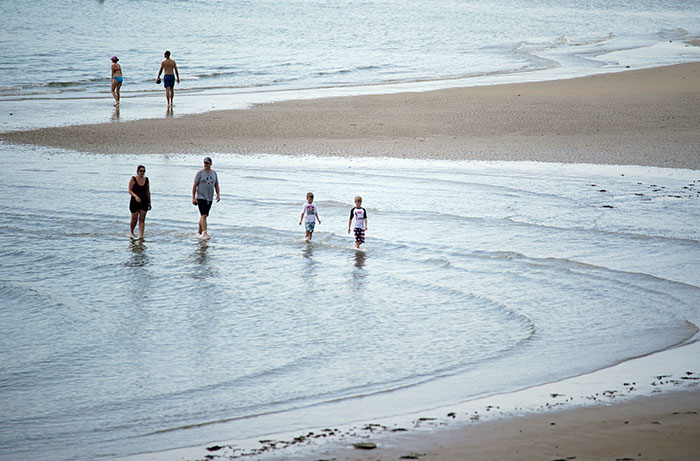
Image credits: Gregory Rec/Portland Press Herald
The sand collapses, or becomes “quick,” when additional force from loading, vibration, or the upward migration of water overcomes the friction holding the grains together.
“I just dropped like a rock,” Jamie told News Center Maine on June 6. “[My husband] said I was there and then the next minute I wasn’t.”
The Maine Department of Agriculture, Conservation, and Forestry further explained that Jamie had stepped on a pocket of supersaturated sand caused by the changing direction of the nearby Morse River.
Instead of flowing out to sea, the river is directed along the beach because of erosion caused by impactful winter storms.
Patrick said one minute, Jamie was there, and the next, she was not
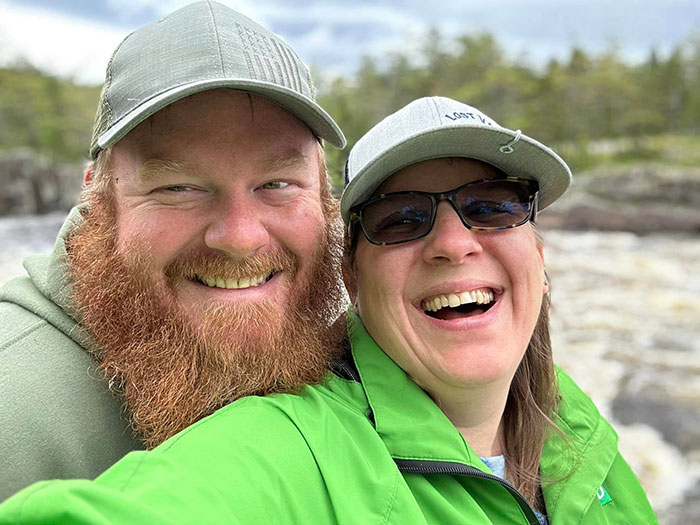
Image credits: Jamie Acord
“The sand is saturated with water,” spokesperson Jim told the local news outlet. “It’s even more unstable and very easy to find yourself sinking into it.”
Jim reportedly said the sand wouldn’t swallow a person whole. However, if someone does get stuck, they should stay calm, lean back, and wiggle their toes to get out.
“What is occurring is a 100-percent survivable scenario,” he added.
The expert revealed that the situation is a first for the department, as far as he’s aware. Nevertheless, saturated sand is common.
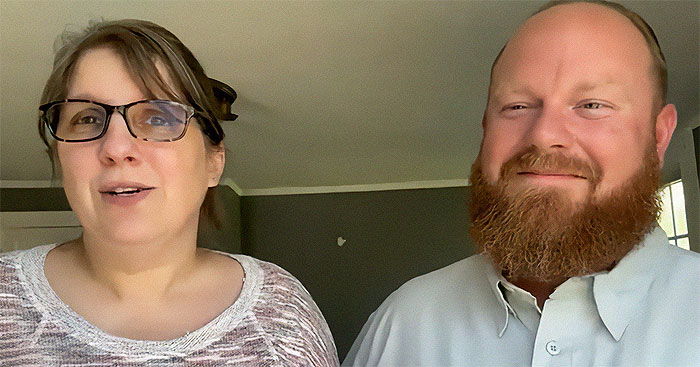
Image credits: ABC News
“Maybe you have a memory of camping and stepping in some sinkable mud, finding you’re up to your calf and how difficult it was, but you got yourself out,” Jim told News Center Maine. “I think this is the same type of situation.”
With Jamie’s ordeal circulating on social media in the past month, many people were reminded of quicksand’s terrifying depiction on screens.
Commenting on the woman’s testimony of her accident shared on Good Morning America’s official TikTok page, on June 12, a person confessed: “Ok this was one of my biggest fears as a kid.
“Oh and the Bermuda Triangle. And killer bees taking over my town.”
Jamie’s ordeal sparked discussions on Hollywood’s dramatic and exaggerated portrayal of quicksand
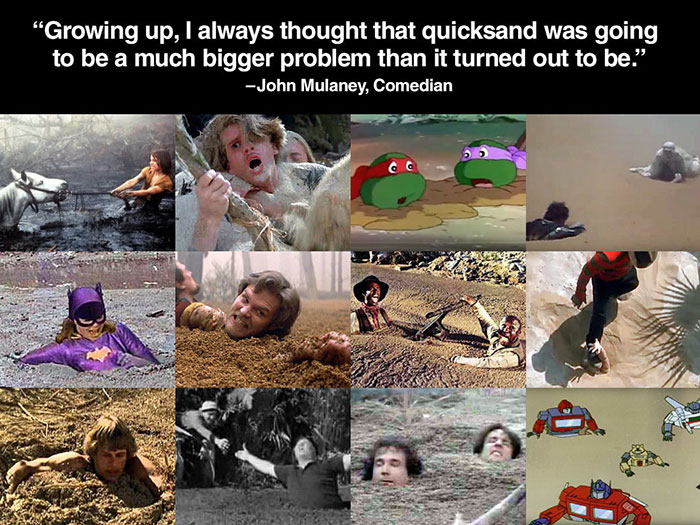
Image credits: Jyssica Schwartz/Medium
“Based upon my childhood TV shows, I expected quicksand to be a much bigger problem,” someone commented on the AP’s official X account (formerly known as Twitter).
A scary engulfment was notably illustrated in the 2008 movie Indiana Jones and the Kingdom of the Crystal Skull in a scene where Indiana Jones (Harrison Ford) and his companions encounter quicksand.
The 1987 fantasy comedy The Princess Bride features a memorable scene in the Fire Swamp where the characters get caught in quicksand.
In the 1960s sitcom Gilligan’s Island, various episodes feature quicksand traps, with the characters often finding themselves in comical situations involving quicksand.
In an episode of the 1980s series The A-Team entitled The Bend in the River: Part 1, the characters also deal with quicksand.
“Us 80s kids would be prepared for this,” a reader commented



















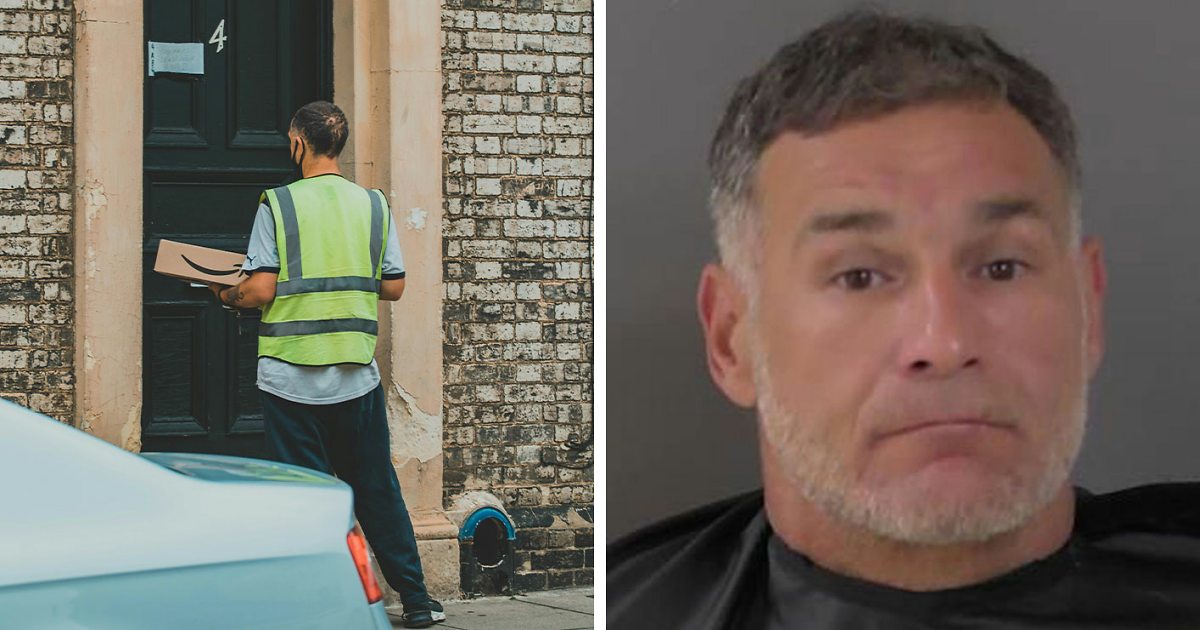
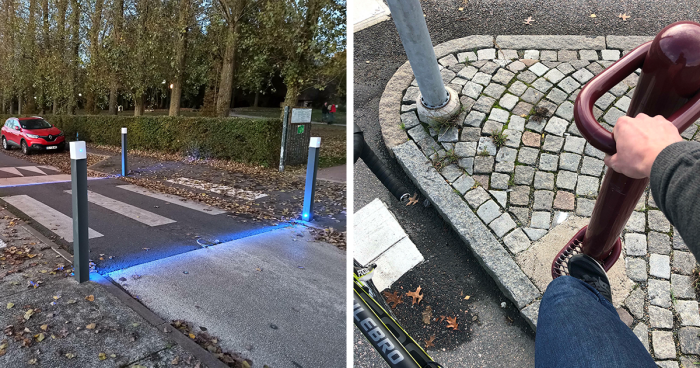







 English (US) ·
English (US) ·